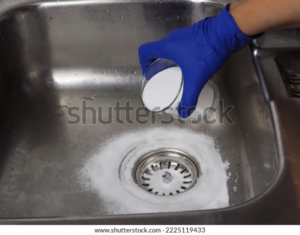Emergency Roadside can turn a fun family trip into a stressful experience. Fortunately, being prepared can make it less of a hassle.
You can prepare by keeping a well-stocked roadside kit in your vehicle. Also, if possible, stay inside your car and turn on your hazards so other drivers know you need help.

You are driving along a quiet road enjoying the scenery when your vehicle suddenly sputters to a stop. Your battery is dead. Thankfully, emergency roadside assistance provides jump start service to get you back on the road.
A jump start (also known as a boost) is the procedure of temporarily connecting a battery with an external power source in order to recharge it and start a motor vehicle. It is usually performed using jumper cables. This temporary connection of the disabled car battery to another working battery or an outside power source allows the engine to be started, and then the assisting vehicle’s electrical system recharges the disabled vehicle’s battery through its normal charging system.
Jumper cables are provided by most roadside assistance providers. They are generally color-coded red and black, and their ends have metal clamps that attach to the vehicles’ batteries. To perform a jump start, first park a vehicle with a working battery close to the one that needs a jump. The vehicles can be next to each other or facing bumper-to-bumper, as long as there is plenty of slack for the jumper cables to reach their respective batteries. Turn off the ignition in both cars and remove the keys. Next, shut off the accessories in both cars and set the emergency brakes. Now, open the hoods of both vehicles and locate the batteries. The positive terminal is usually marked with a “+” and the negative terminal is often covered by a plastic cap that you will need to flip away.
Once the connections are made, attach the red clamp on one end of the jumper cable to the positive terminal on the working battery. Connect the other end of the cable to the negative terminal on the disabled vehicle’s battery. Make sure the clamps are not touching each other. Once the connections are complete, start the assisting vehicle’s engine and allow it to run for about three minutes. Then, shut off the engine and remove the jumper cables.
As you can see, emergency roadside assistance can save you time and money. It also offers peace of mind and safety, whether you are on a road trip with the family or simply commuting to work. Consider adding a roadside assistance plan to your auto insurance policy today.
Tire Change
It’s a scenario that nobody wants to think about, but sometimes you could find yourself on the side of the road with a flat tire in the middle of nowhere. With emergency roadside assistance, a professional will be dispatched to change your flat tire with a spare.
Some car insurance providers offer this service as an add-on, while others include it with a comprehensive vehicle protection package. When shopping for coverage, make sure you get a complete explanation of your policy’s provisions. GEICO, for example, offers emergency roadside services for free as part of its auto insurance policy.
Most vehicles have a spare tire already mounted on a wheel rim to be used in case of a flat or blowout. Spare tires are usually smaller than standard-sized tires (to save trunk space, weight and cost), and most come with jacks and lug wrenches to replace the damaged tire. Some luxury cars also use run-flat tires, which are designed to drive a limited number of miles after getting punctured.
Having a spare tire can save you a lot of time and hassle, but if your tire gets flat while driving, the first thing you’ll need to do is stop your vehicle in a safe place on the shoulder or in a well-lit parking area. You’ll need to activate your hazard lights so traffic knows you have stopped. Then, move your vehicle to a spot where it is easy to work on and break the lug nuts loose so you can remove the old tire and put on the spare.
Changing a flat tire can be difficult and dangerous in high-traffic areas. You’ll want to be as far away from the roadway as possible to keep yourself and others safe while the work is being done. You’ll also want to have a good supply of jacks, lug wrenches and tire tools. In addition, it is a good idea to have your tires rotated regularly to prevent uneven tread wear that could cause them to become stuck on the wheel hub. Regular rotations can also help to break up any rust or corrosion that may have formed between the rim and the hub, making it easier to remove the rim in the event of a flat.
Fuel Delivery
If you’re running low on fuel and can’t get to a gas station, emergency roadside services can provide a fast, safe solution. This service is often included in roadside assistance plans offered by auto clubs, insurance companies, and vehicle manufacturers. You may also be able to purchase this service through an independent provider for a fee. When requesting roadside fuel delivery, be sure to provide clear and accurate information about your location and the type of fuel you need. This helps ensure that your request is dispatched promptly and efficiently, minimizing delays.
When your car runs out of fuel, you’ll need to maneuver your vehicle to the side of the road in a safe location. Activate your hazard lights to help other drivers see you and stay safe as you wait for the roadside assistance service to arrive. Stay inside your vehicle, if possible, to avoid walking along busy roads and highways, which can increase your risk of exposure to traffic accidents and other safety hazards. Additionally, you’ll need to keep your doors locked and your emergency lights on during the refueling process.
Once a roadside assistance technician arrives, they’ll provide you with an emergency supply of fuel. This amount usually varies between providers, but you can expect to receive enough fuel to drive to a nearby fueling station. Some providers also offer additional services, such as repairing flat tires or changing batteries. Be sure to check the terms and conditions of your roadside assistance plan to find out if these services are included.
Before selecting a roadside assistance provider, consider their reputation, response time, and coverage area. You should also read reviews and compare pricing to make an informed decision. By choosing a reputable provider, you’ll be able to rest assured knowing that your vehicle will be properly fueled and back on the road in no time. Lastly, be sure to thank the roadside assistance technician for their help after the refueling process is complete. This is a great way to show your appreciation and ensure that they continue providing high-quality service to motorists in need.
Lockout Service
When you’re locked out of your car, it can be one of the most frustrating experiences of your life. Fortunately, emergency lockout services are available to help. These specialists use manufacturer approved tools to gain access to your vehicle, helping you get back on the road as quickly as possible. They can also provide you with a spare key if needed.
The best part about using a lockout service is that it can be very affordable and convenient. If you have a roadside assistance plan that includes this service, the costs are covered under your policy, which means that it’s much more cost-effective than trying to break into your own vehicle using a coat hanger. In addition, a professional lockout service can prevent potential damage to your door or ignition.
Lockout emergencies can happen at any time, and you should never try to open your vehicle yourself without the proper tools. This could cause expensive damage to your vehicle and make it more difficult to access when you need to. In addition, some luxury vehicles require special tools to unlock or reprogramme the electronic keys, which is often not covered by traditional roadside assistance plans.
A reputable locksmith will always start with a basic inspection of your vehicle to determine the type of lock and its condition. If they need to replace the lock, they will let you know upfront how much it will cost. Then, they will proceed with the required work. This will ensure that you’re not overcharged or charged for unnecessary repairs.
If you’re a driver in the area of Middle TN or Lebanon TN, a good locksmith can be an invaluable ally. They’ll make sure you can regain entry to your vehicle as quickly as possible and minimize any damage to your vehicle or lock. They’re also trained to offer the best customer service, which can be a real asset when you’re in a stressful situation. They can help you stay calm and resolve the issue promptly. They’ll even give you advice on how to avoid getting locked out in the future.




